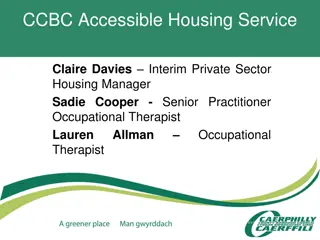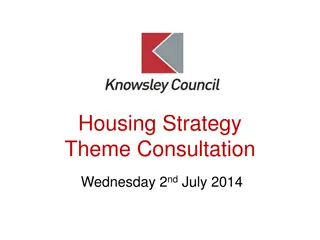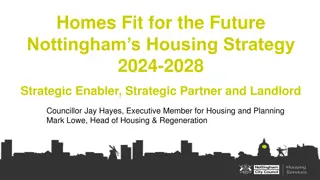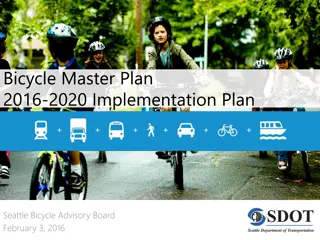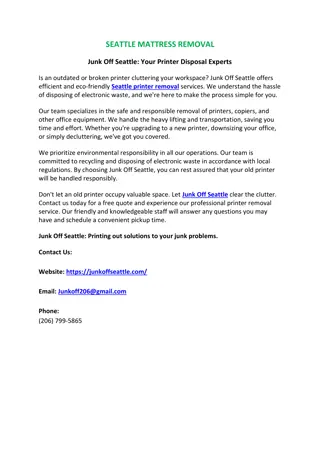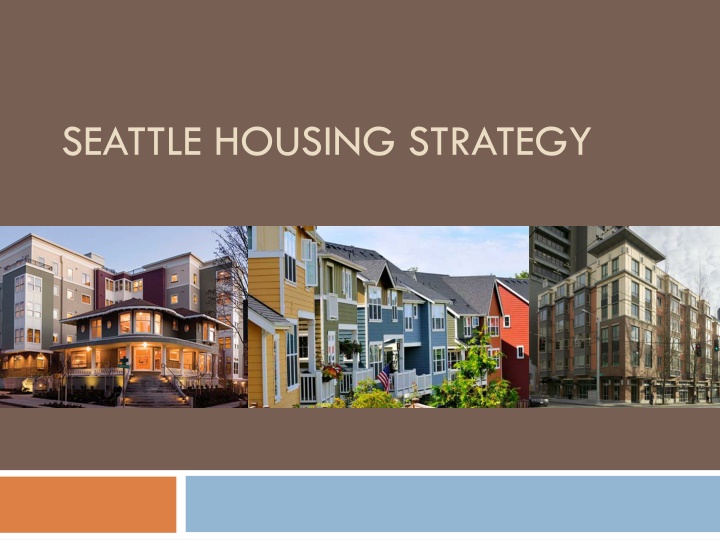
Seattle Housing Strategy Overview
Seattle's housing strategy involves optimizing investments in affordable housing, making publicly owned land available for housing, reducing the cost of developing new housing, and fostering a diverse supply of housing. The city aims to address the growing demand for housing units through various initiatives and programs aimed at supporting renters, low-income households, and first-time homebuyers. By utilizing tools like the Seattle Housing Levy, affordable housing zoning incentives, and public-private partnerships, Seattle is working towards ensuring adequate and affordable housing opportunities for all residents.
Download Presentation

Please find below an Image/Link to download the presentation.
The content on the website is provided AS IS for your information and personal use only. It may not be sold, licensed, or shared on other websites without obtaining consent from the author. If you encounter any issues during the download, it is possible that the publisher has removed the file from their server.
You are allowed to download the files provided on this website for personal or commercial use, subject to the condition that they are used lawfully. All files are the property of their respective owners.
The content on the website is provided AS IS for your information and personal use only. It may not be sold, licensed, or shared on other websites without obtaining consent from the author.
E N D
Presentation Transcript
A Growing City Housing Units Permitted and Constructed 10000 Permits Issued Permits Finaled 8000 6000 4000 2000 0 1990 1991 1992 1993 1994 1995 1996 1997 1998 1999 2000 2001 2002 2003 2004 2005 2006 2007 2008 2009 2010 2011 2012
A Mix of Housing Types Net Residential Development 8000 Mixed Use 7000 Multi-family ADU/DADU 6000 Single Family 5000 4000 3000 2000 1000 0 2005 2006 2007 2008 2009 2010 2011 2012
Half the Citys Households are Renters Total Renter Households Extremely Low Income Other 39% 26% Low and Very Low Income 35% Source: HUD Consolidated Housing Affordability Strategy Analysis, based on data from the 2005-09 American Community Survey.
Many Households Pay Too Much Extremly Low Income Households Total Renter Households 22,190 6,175 5,590 26% 39% Not cost burdened Cost burdened Severely cost burdened 54,000 cost burdened households Low and Very Low Income Households 35% 22,970 19,630 6,885 Not cost burdened Cost burdened Severely cost burdened
Seattle Housing Strategy 1. Optimize investments in affordable housing 2. Make publicly owned land available for housing 3. Reduce the cost of developing new housing 4. Foster an adequate and diverse supply of housing
1. Optimize Investments in Affordable Housing What we ve done Seattle Housing Levy: an essential tool serving primarily extremely low-income households. From 2005-2012 the levy provided $157M for 3,671 rental units and $31M to assist 620 first-time homebuyers. Strategy Continue direct investment by renewing the Seattle Housing Levy in 2016 Strengthen the Multi-Family Tax Exemption program Revise the affordable housing zoning incentives city-wide, including adjusting the fee-in-lieu formula
2. Make Publicly Owned Land Available for Housing What we ve done 12th Avenue Arts: Capitol Hill Housing will transform a parking lot into a mixed-use building integrating affordable housing, arts and performance space, retail and nonprofit offices under one roof. Strategy Continue to identify opportunities to use City-owned properties for affordable housing, engaging neighboring communities early in the development process. Work with partner agencies to utilize other public property for housing, including transit oriented development work with Sound Transit.
3. Reduce the Cost of Developing New Housing What we ve done Regulatory Reform Legislation: streamlines regulatory requirements and adds flexibility for developers, home owners, and small business entrepreneurs. Strategy Continue further improvements to the permitting process by better aligning processes across departments Encourage more sustainable housing development that qualifies for the Priority Green Expedited or Facilitated review and permitting processes and expand this program to include upgrades to existing housing Identify strategies to reduce or eliminate redundant or unnecessary processes or requirements
4. Foster an Adequate and Diverse Supply of Housing What we ve done Enabled and encouraged the creation of affordable infill housing with over 500 mother-in-law apartments and backyard cottages built since 2005 and more than 1,000 rooms built or permitted as a part of 24 micro-housing projects since 2008. Strategy Encourage compact development near frequent transit as we work with neighborhoods to consider station area plans, urban design frameworks and zoning proposals Explore options for encouraging a wider variety of housing types, particularly to address affordability and family housing









